example Use Case
MediaOps – Media Asset Workflow Automation
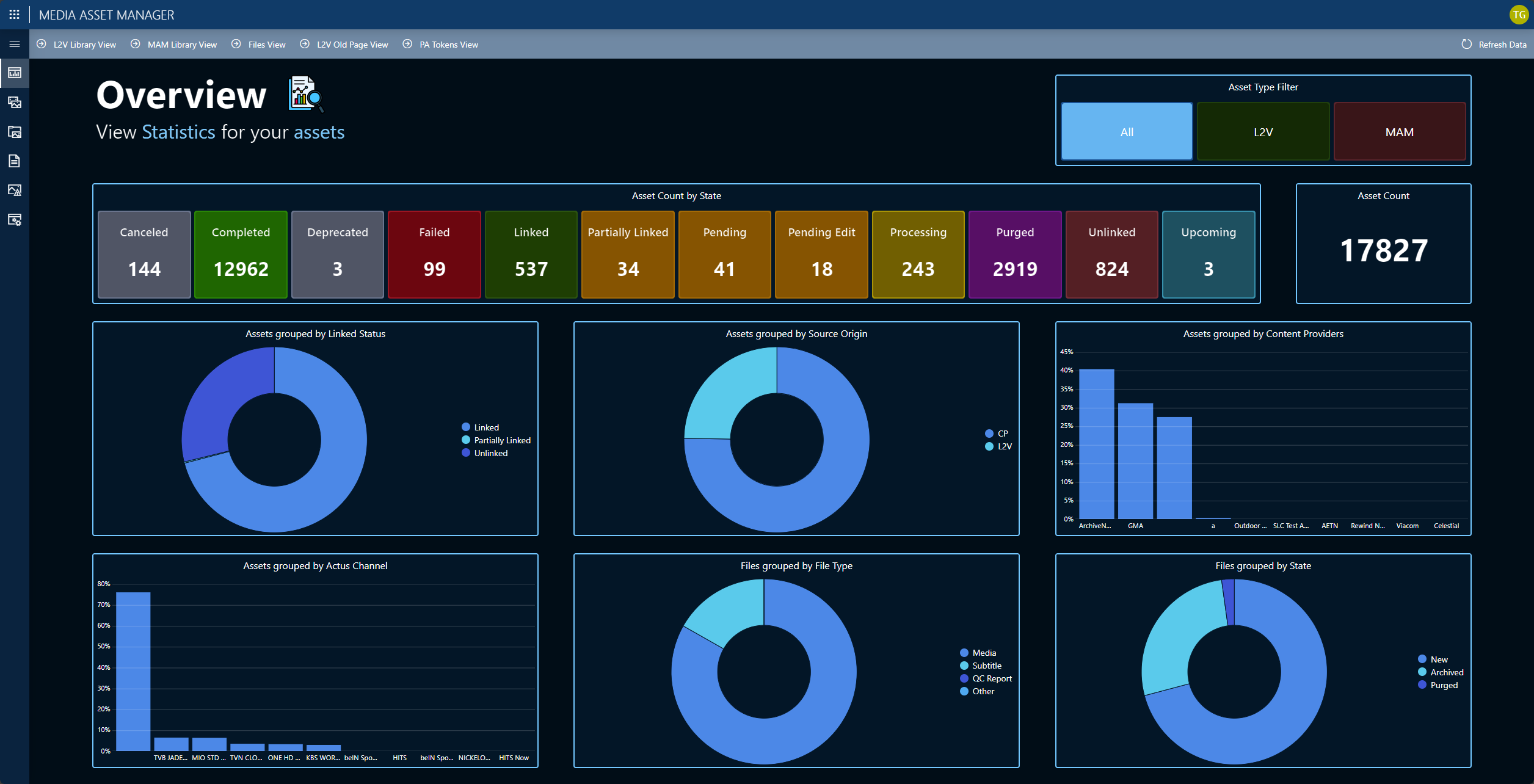
This use case illustrates how DataMiner can be used to manage and track all media assets and files (video, audio, subtitles, etc.) in an operation throughout their complete life cycle.
DataMiner has been integrated with the user’s non-linear and VOD toolset (ForeTV Pulse) and regularly receives XML asset metadata files from that platform. Based on the service information and other metadata in those XML files, DataMiner fully automates the creation and management of all files. Either DataMiner records live streams first through Actus Digital, or it picks up files that arrive from external content providers and maps those with the assets defined in ForeTV.
Based on the unique asset ID, metadata, service type, and many other factors, DataMiner triggers a whole set of automated tasks, such as different transcoding workflows (via Telestream Vantage), or it automatically retrieves files back from the user’s archive. DataMiner is also used for mass manipulation of asset metadata, for example to change the purge date for hundreds of assets.
The DataMiner Object Models (DOM) module is used to store all info about each asset and all files. Combined with our Process Automation (PA) framework and DataMiner Low- Code Apps, this results in a highly automated, open and future-proof multi-vendor media asset management solution that significantly reduces human errors, improves service quality, and increases flexibility.
USE CASE DETAILS
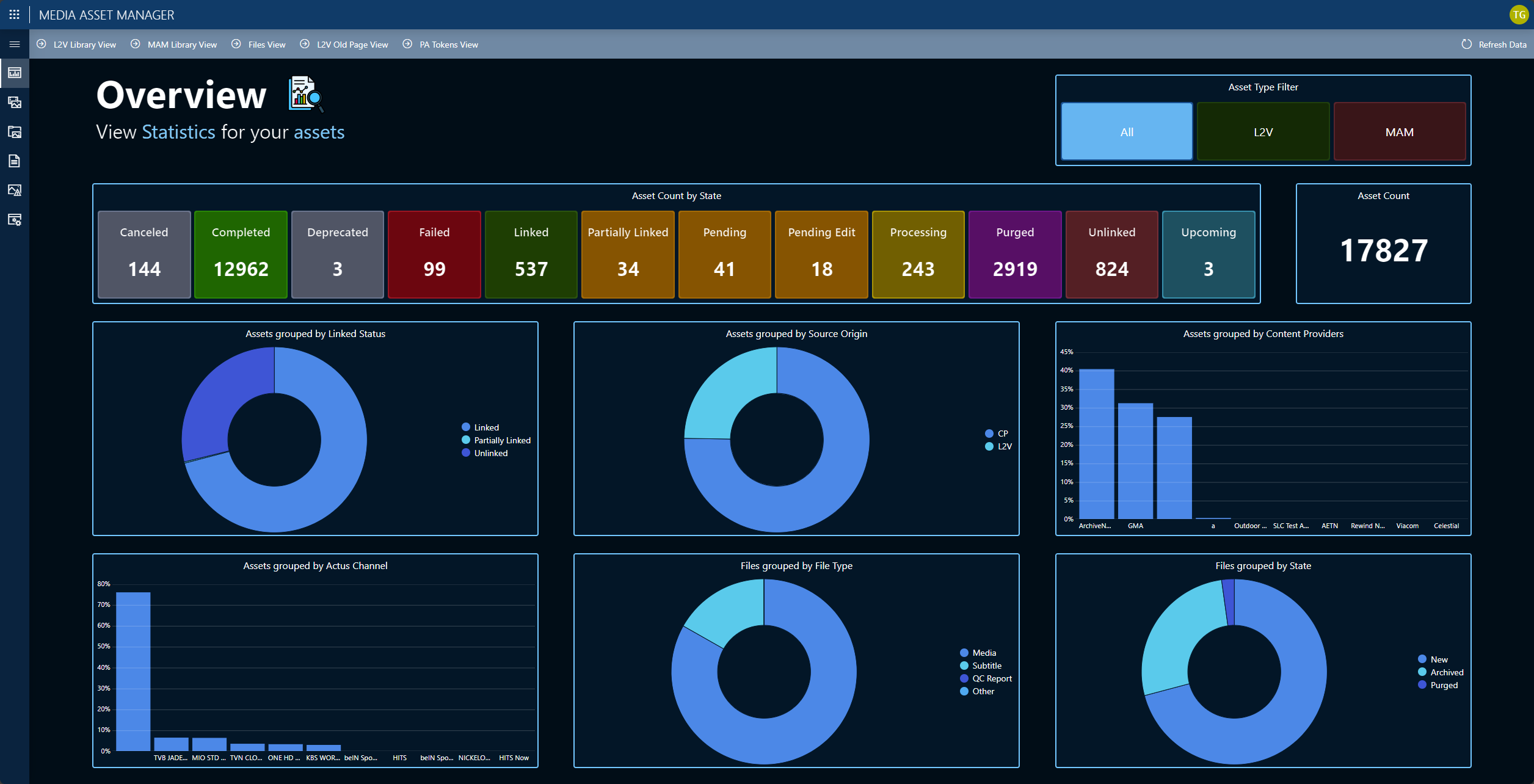 This tailored low-code app is the front end for the operations team. The overview page shows all managed assets, grouped by asset state, but also by type or by content provider.
This tailored low-code app is the front end for the operations team. The overview page shows all managed assets, grouped by asset state, but also by type or by content provider.
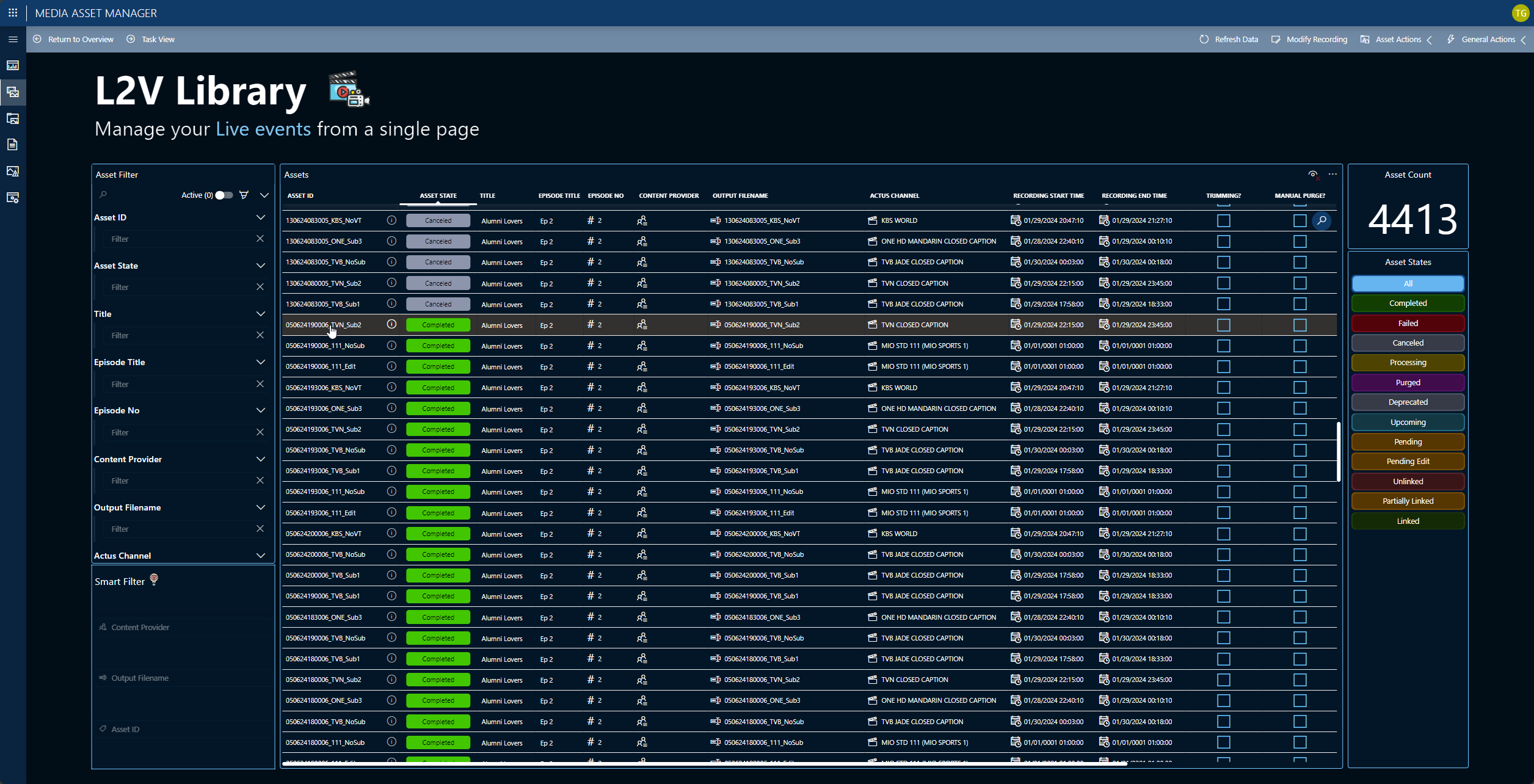 The Live2Vod library includes all assets with their states and much more, such as the Actus channels where the feed was recorded, the start time, the stop time etc. This view comes with extensive filter capabilities so you can easily find the right asset.
The Live2Vod library includes all assets with their states and much more, such as the Actus channels where the feed was recorded, the start time, the stop time etc. This view comes with extensive filter capabilities so you can easily find the right asset.
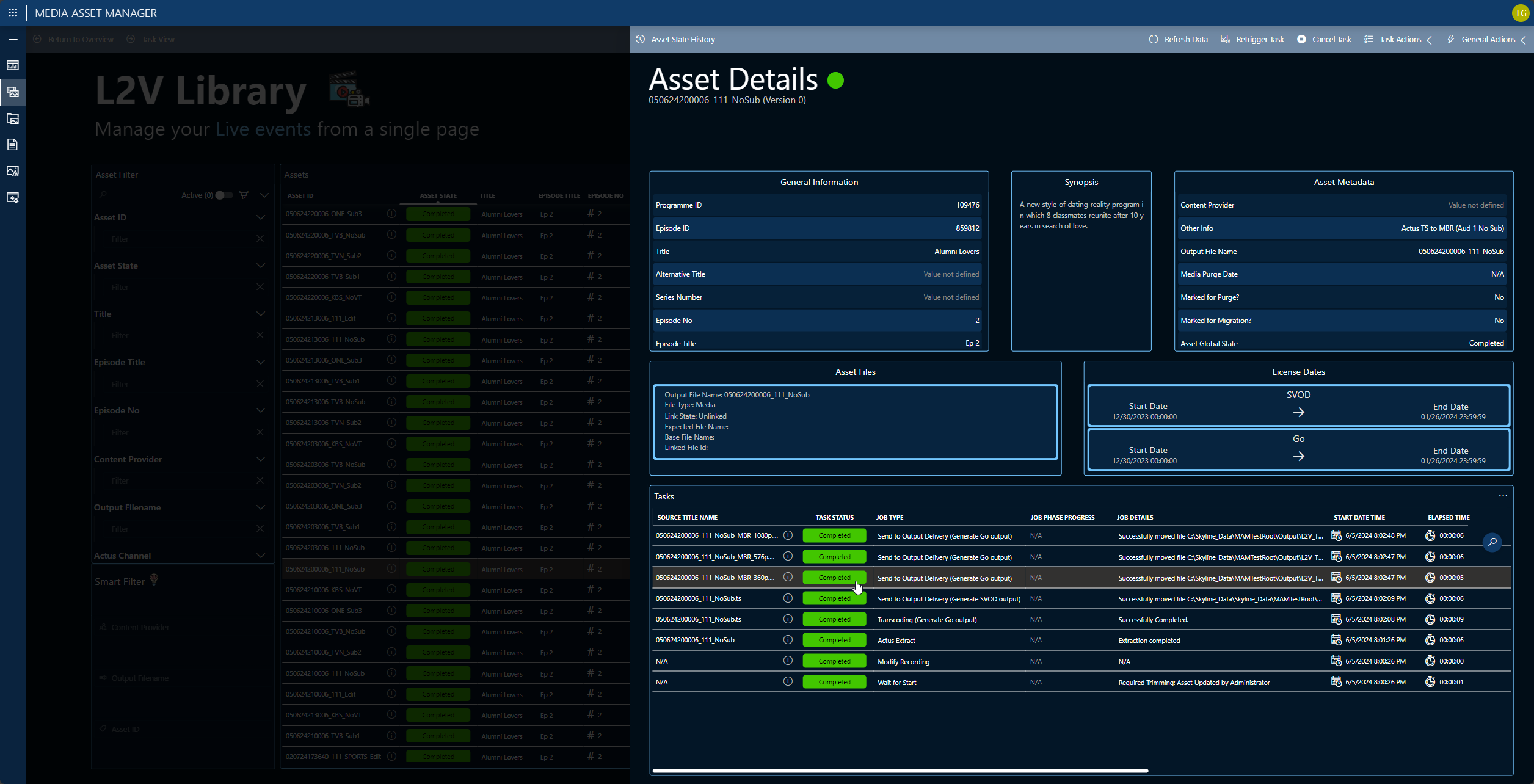 The Asset Details view contains more detailed information, such as licensing rights for different distribution platforms, and the associated file name, program, and episode IDs. You can also find the list of tasks here that are automated by DataMiner and their status for the asset. This includes for example information on whether the file was successfully extracted from the Actus recording channel, transcoding jobs, or if a file has been successfully moved to the output delivery folder.
The Asset Details view contains more detailed information, such as licensing rights for different distribution platforms, and the associated file name, program, and episode IDs. You can also find the list of tasks here that are automated by DataMiner and their status for the asset. This includes for example information on whether the file was successfully extracted from the Actus recording channel, transcoding jobs, or if a file has been successfully moved to the output delivery folder.
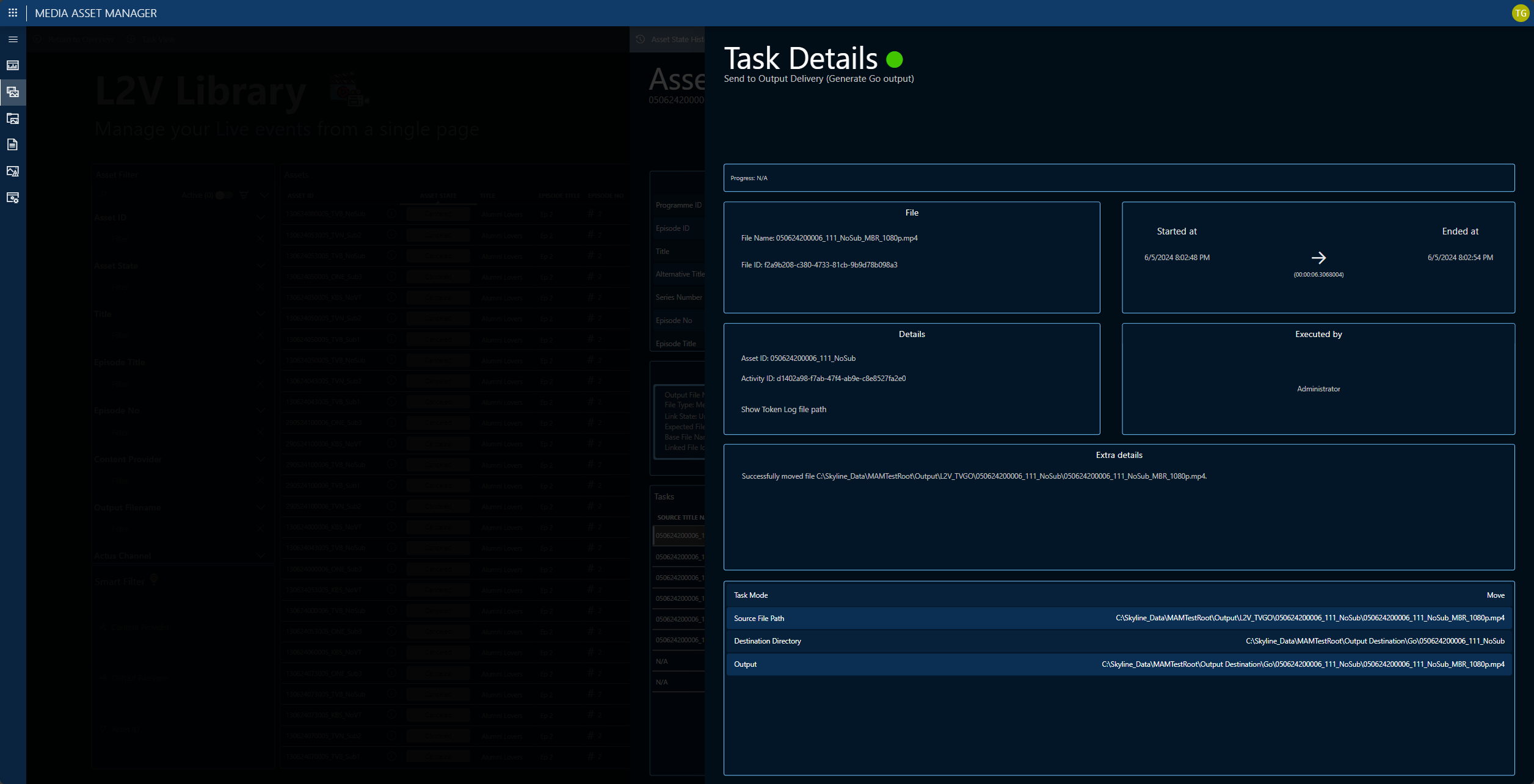 For each task, operators can get more detailed information as shown here.
For each task, operators can get more detailed information as shown here.
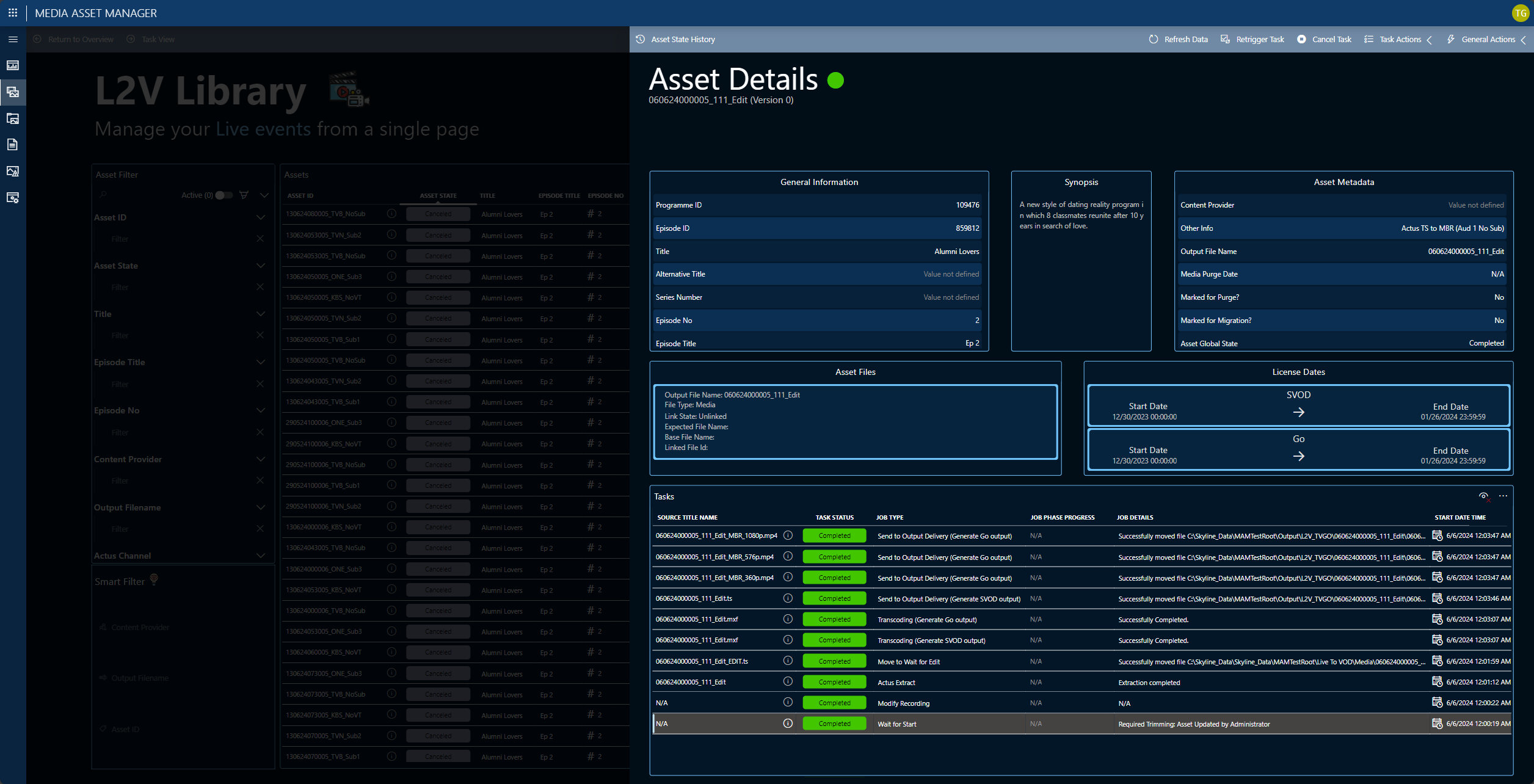 Here is another example showing a series of tasks. The first one is a manual task informing an editor that manual trimming is required before the files can get transcoded. Once this is done, DataMiner automatically starts several transcoding tasks, triggering Telestream Vantage to create several MBR (multi-bitrate resolution) variants, transport stream files, and also MXF files.
Here is another example showing a series of tasks. The first one is a manual task informing an editor that manual trimming is required before the files can get transcoded. Once this is done, DataMiner automatically starts several transcoding tasks, triggering Telestream Vantage to create several MBR (multi-bitrate resolution) variants, transport stream files, and also MXF files.
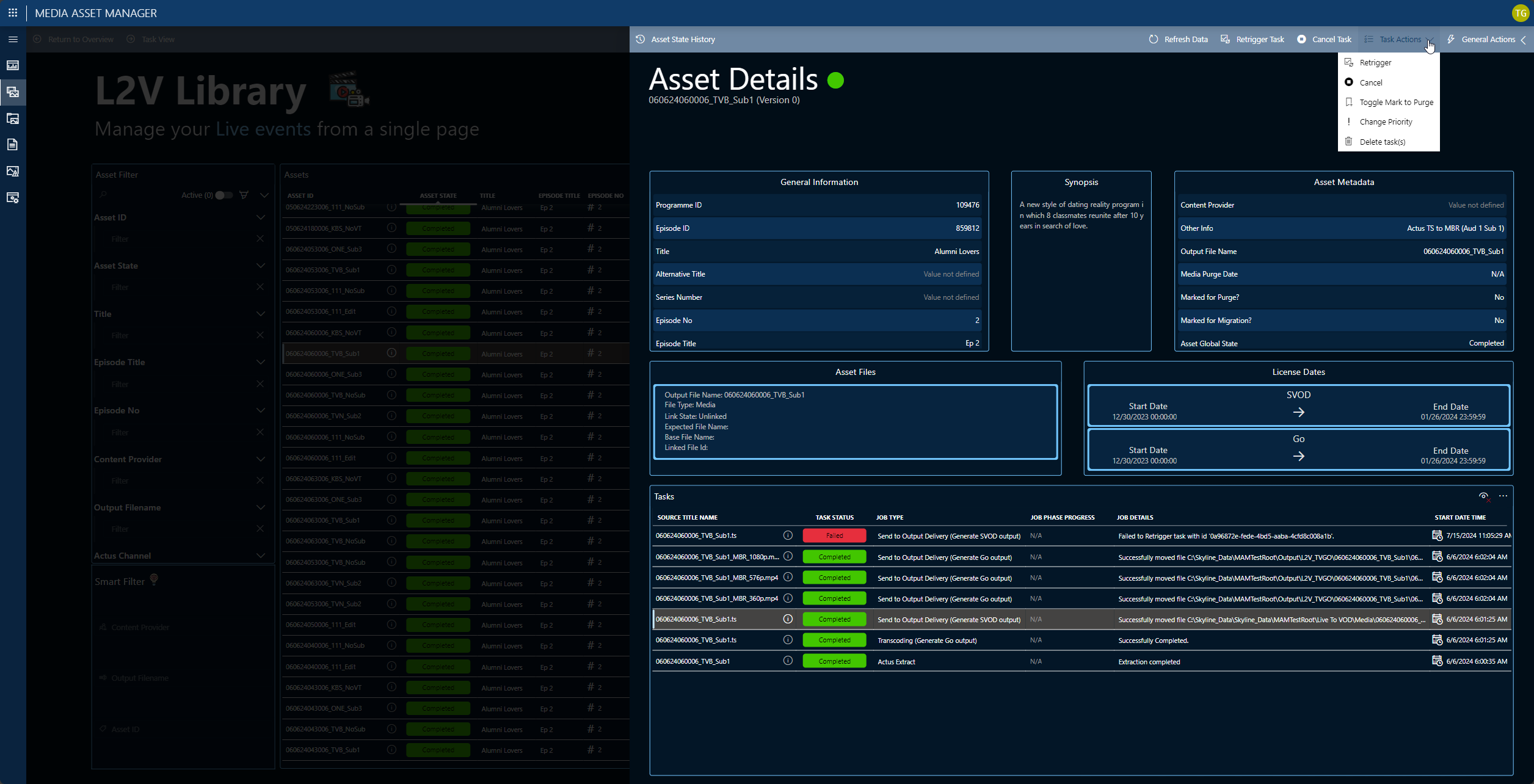 Operators can also easily perform certain actions manually whenever required, for example to retrigger or cancel a task, change the priority of a task, or purge files.
Operators can also easily perform certain actions manually whenever required, for example to retrigger or cancel a task, change the priority of a task, or purge files.
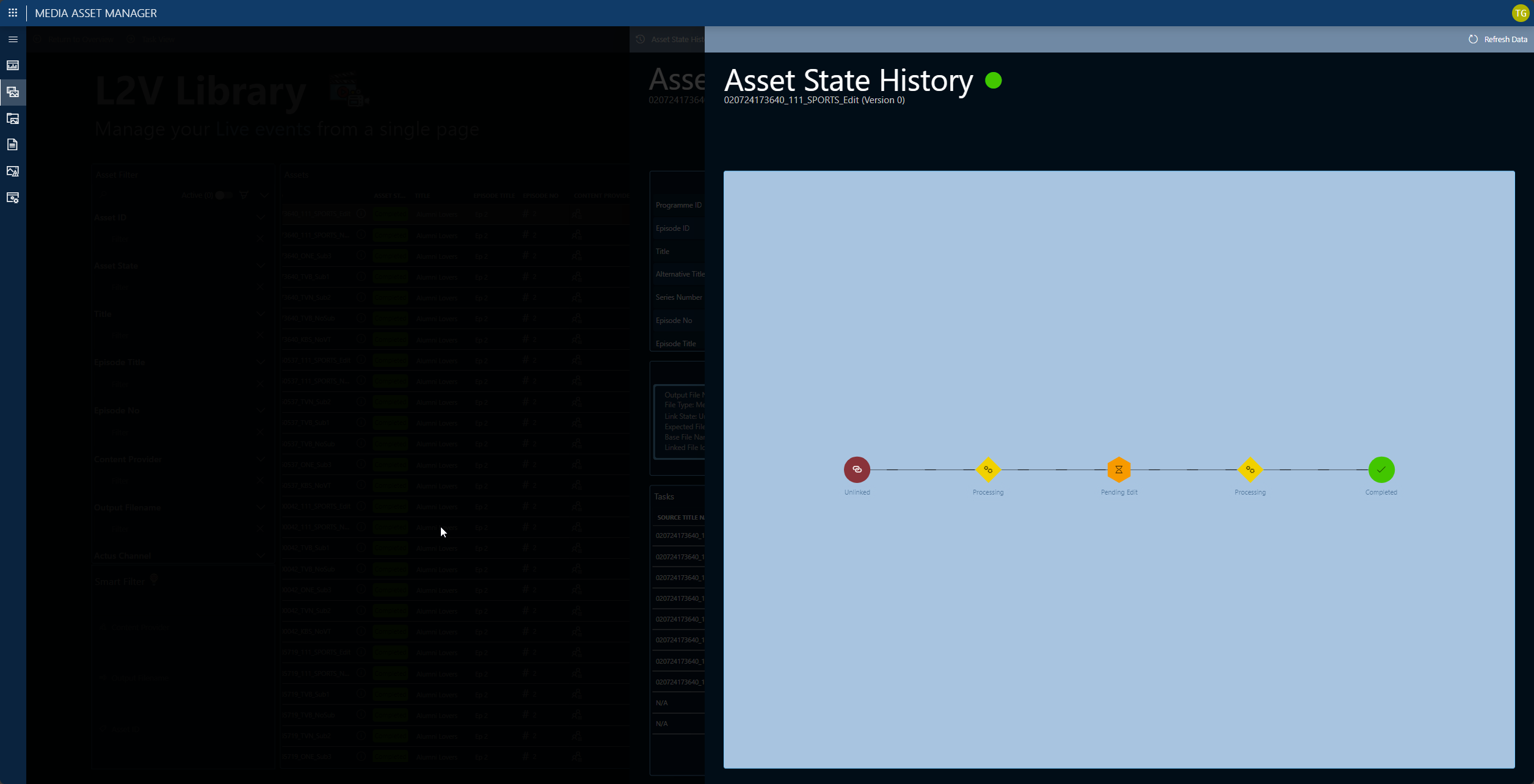 The Asset State History view gives an overview of all the states an asset has had so far.
The Asset State History view gives an overview of all the states an asset has had so far.
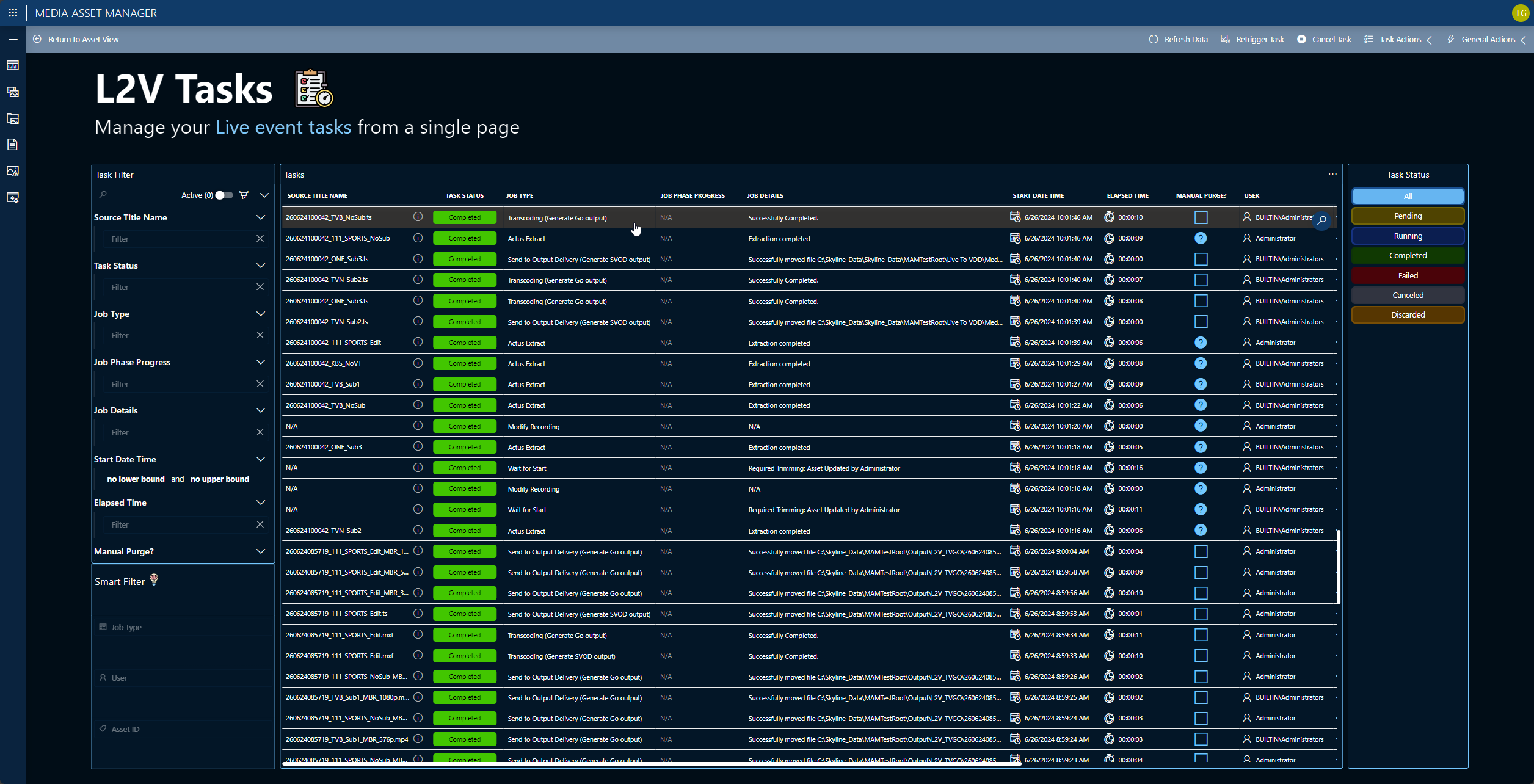 The solution also includes a Tasks View across all assets and files, for example to find all files that need manual trimming.
The solution also includes a Tasks View across all assets and files, for example to find all files that need manual trimming.
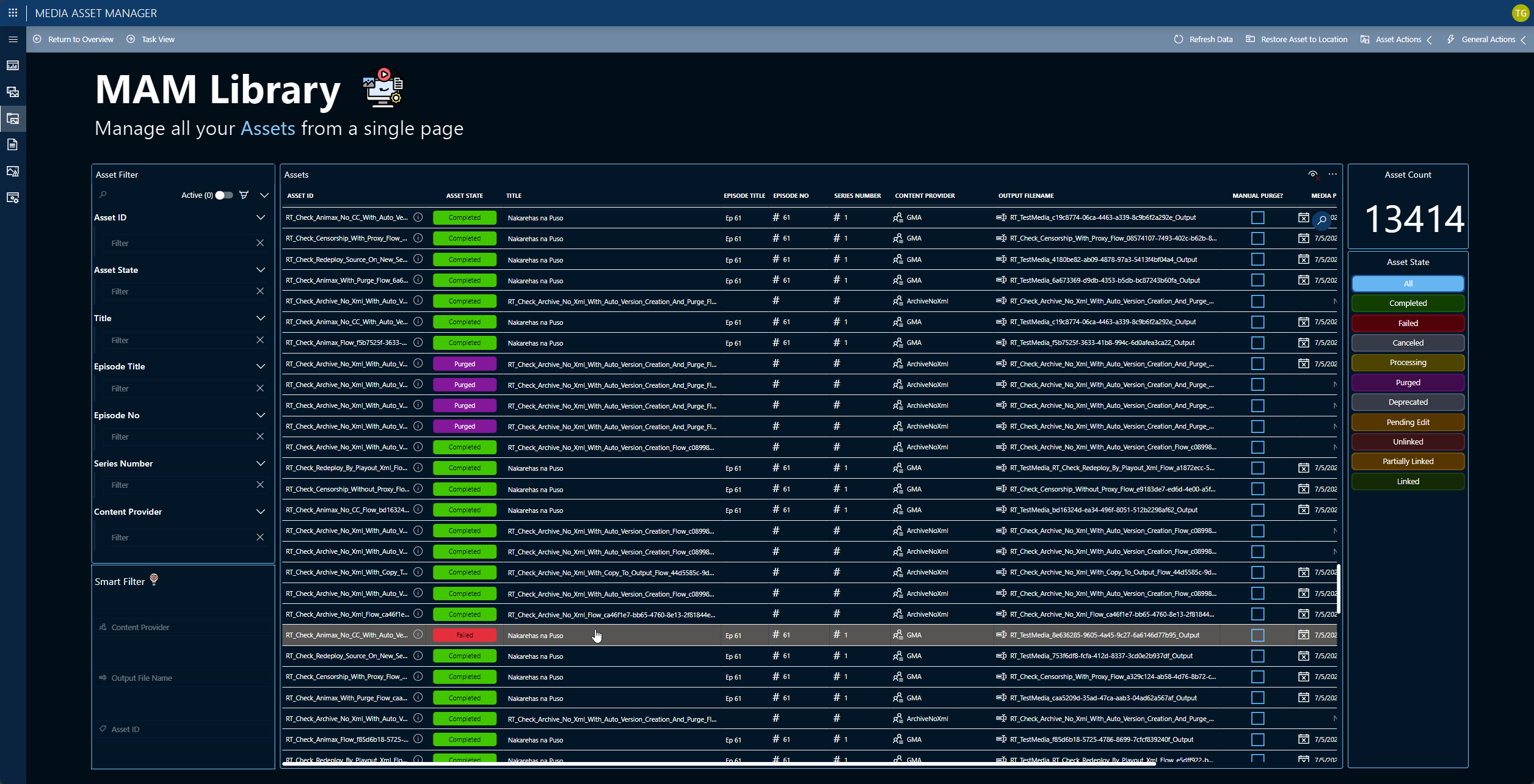 The MAM library looks similar to the L2V library. The asset states and the associated tasks, however, are different.
The MAM library looks similar to the L2V library. The asset states and the associated tasks, however, are different.
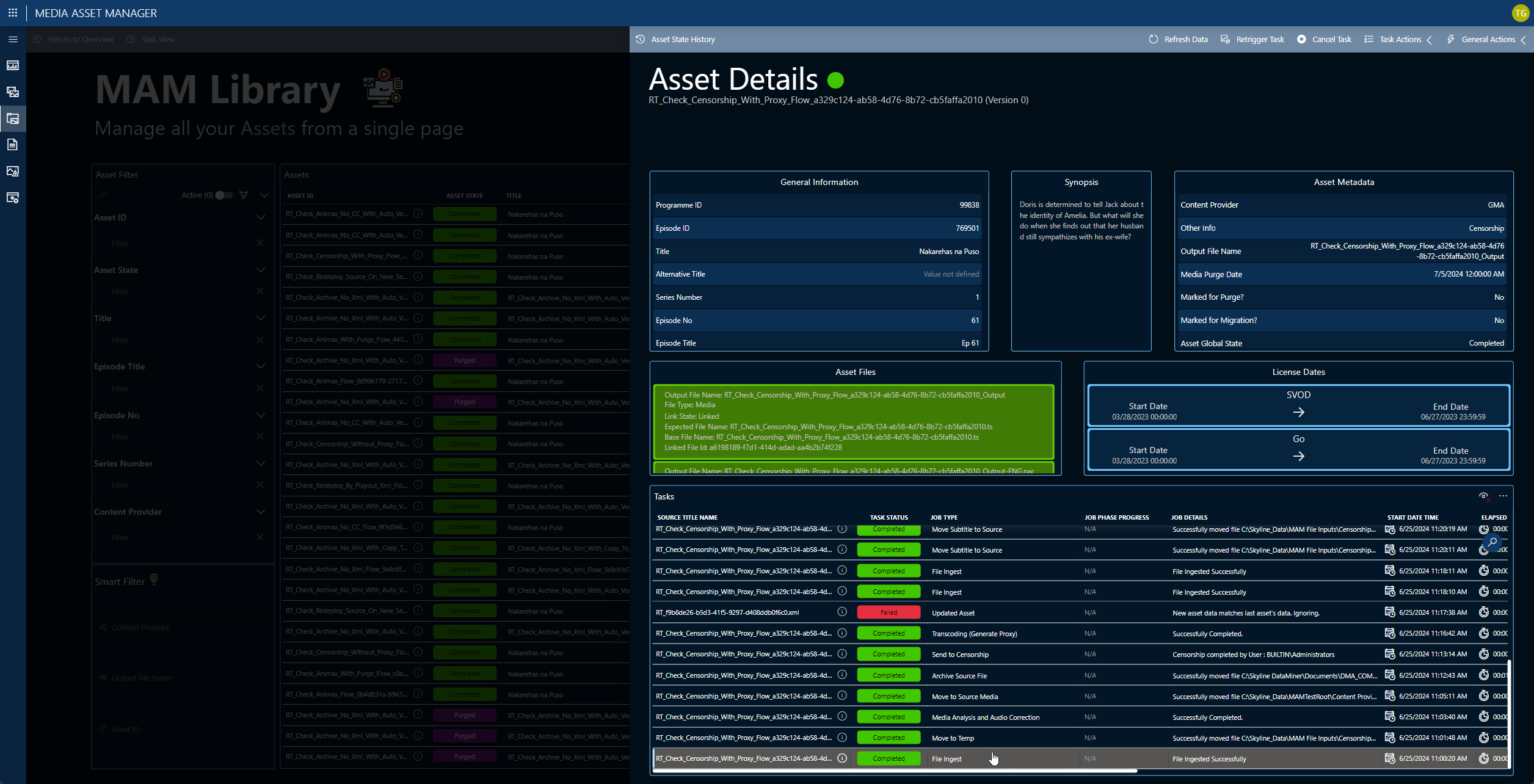 Files arrive via an IBM Aspera solution, then for example run through a QC engine, get sent to censorship, get transcoded, and get delivered to the final output or sent to the user's archive. All this is managed by DataMiner's Process Automation engine.
Files arrive via an IBM Aspera solution, then for example run through a QC engine, get sent to censorship, get transcoded, and get delivered to the final output or sent to the user's archive. All this is managed by DataMiner's Process Automation engine.
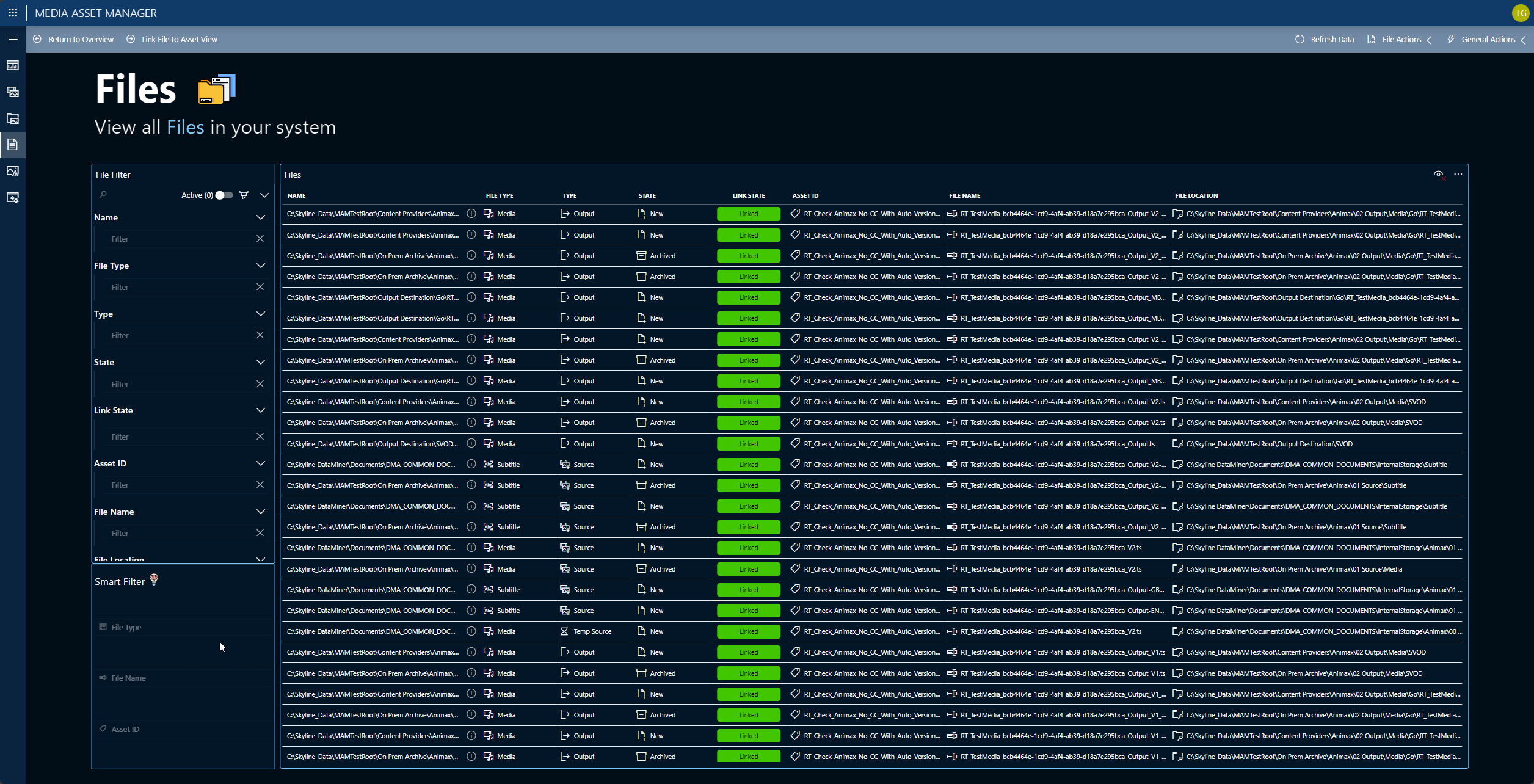 The Files view lets you easily access all files across all media assets. You can sort by location, name, state, type ...
The Files view lets you easily access all files across all media assets. You can sort by location, name, state, type ...
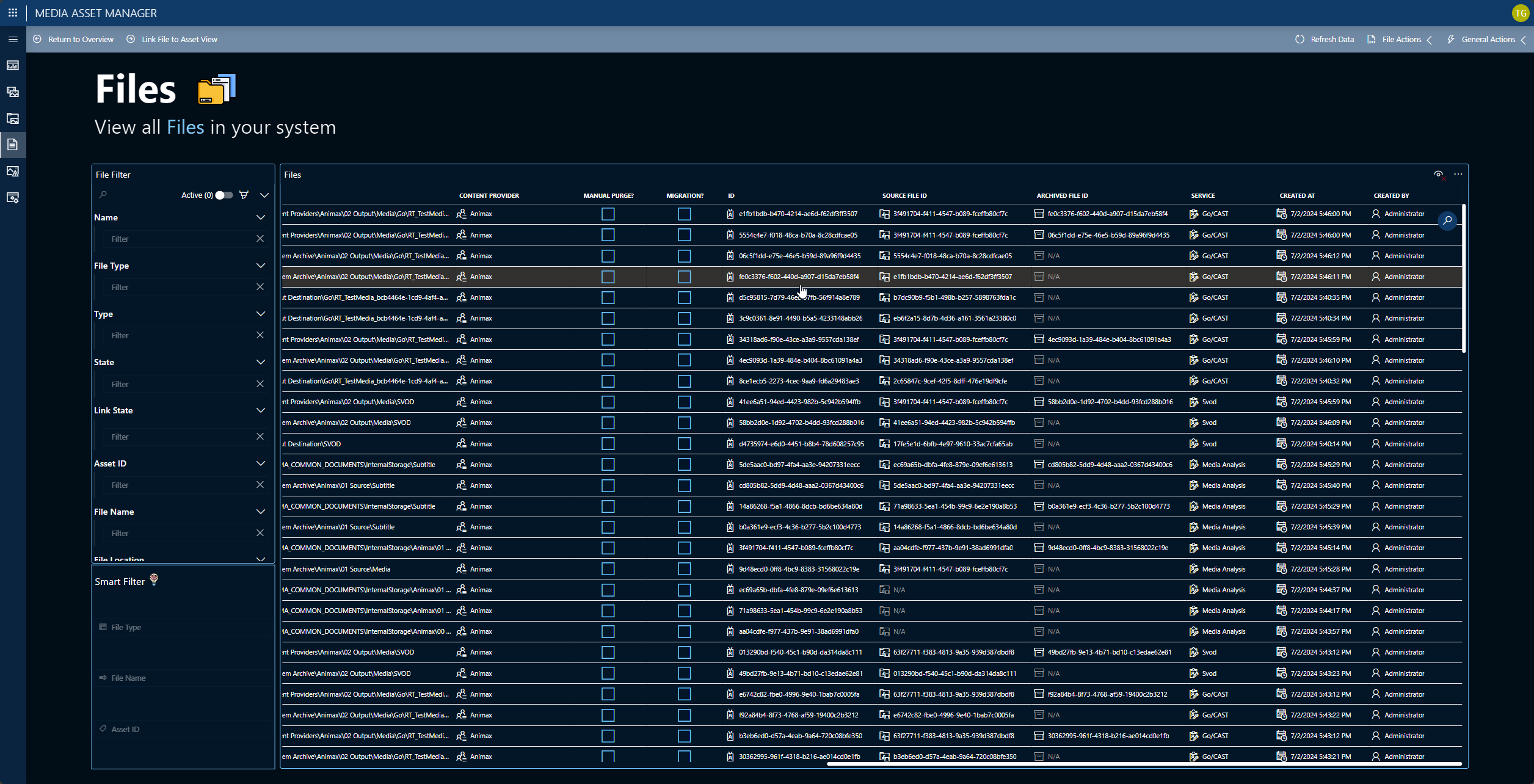 ... content provider, service, and much more.
... content provider, service, and much more.
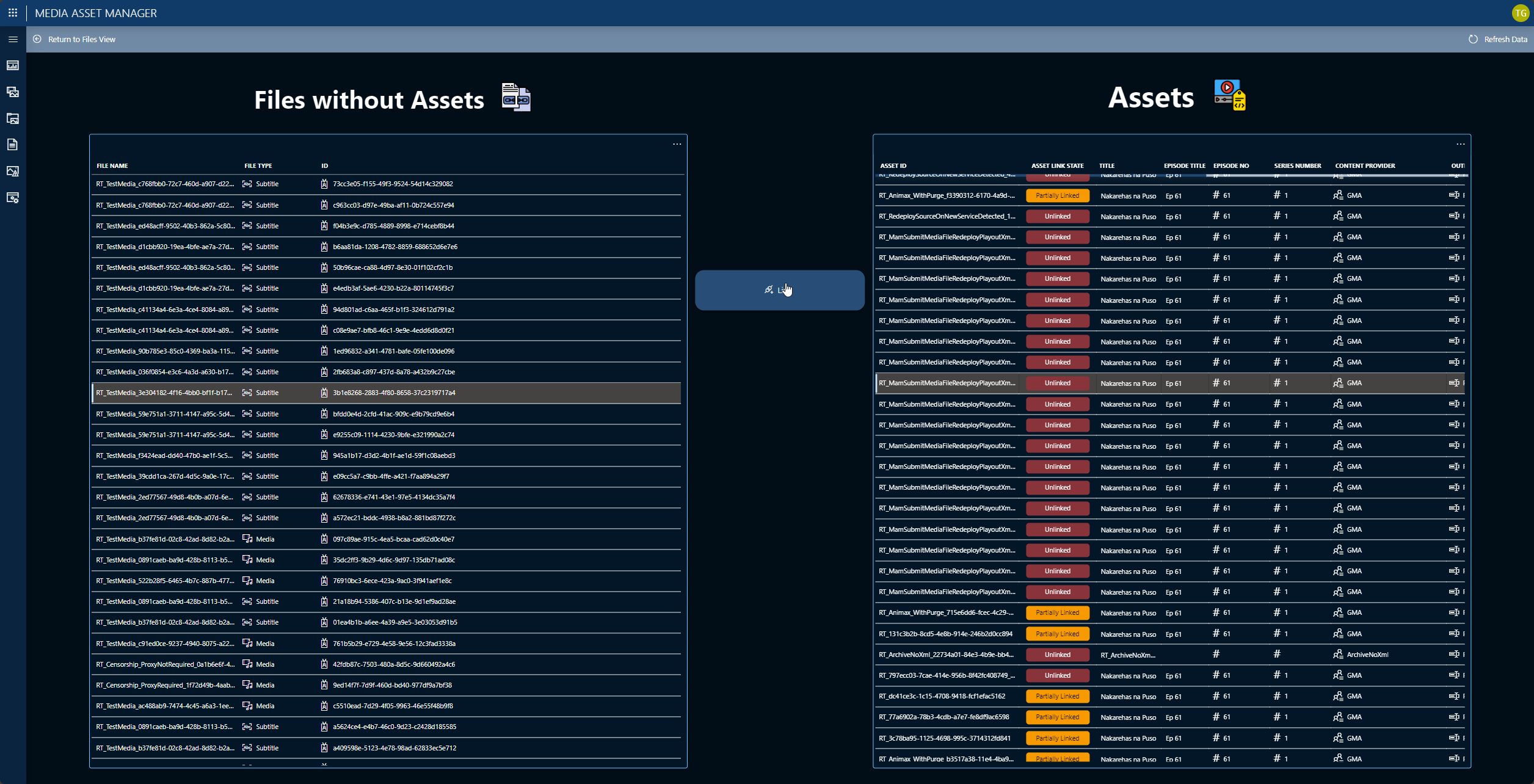 In some situations, operators need to manually link files to assets. This could for example be because of a typo in the file name. This view shows all files that have not yet been linked with an asset. With a single click, operators can now link each file with an asset.
In some situations, operators need to manually link files to assets. This could for example be because of a typo in the file name. This view shows all files that have not yet been linked with an asset. With a single click, operators can now link each file with an asset.
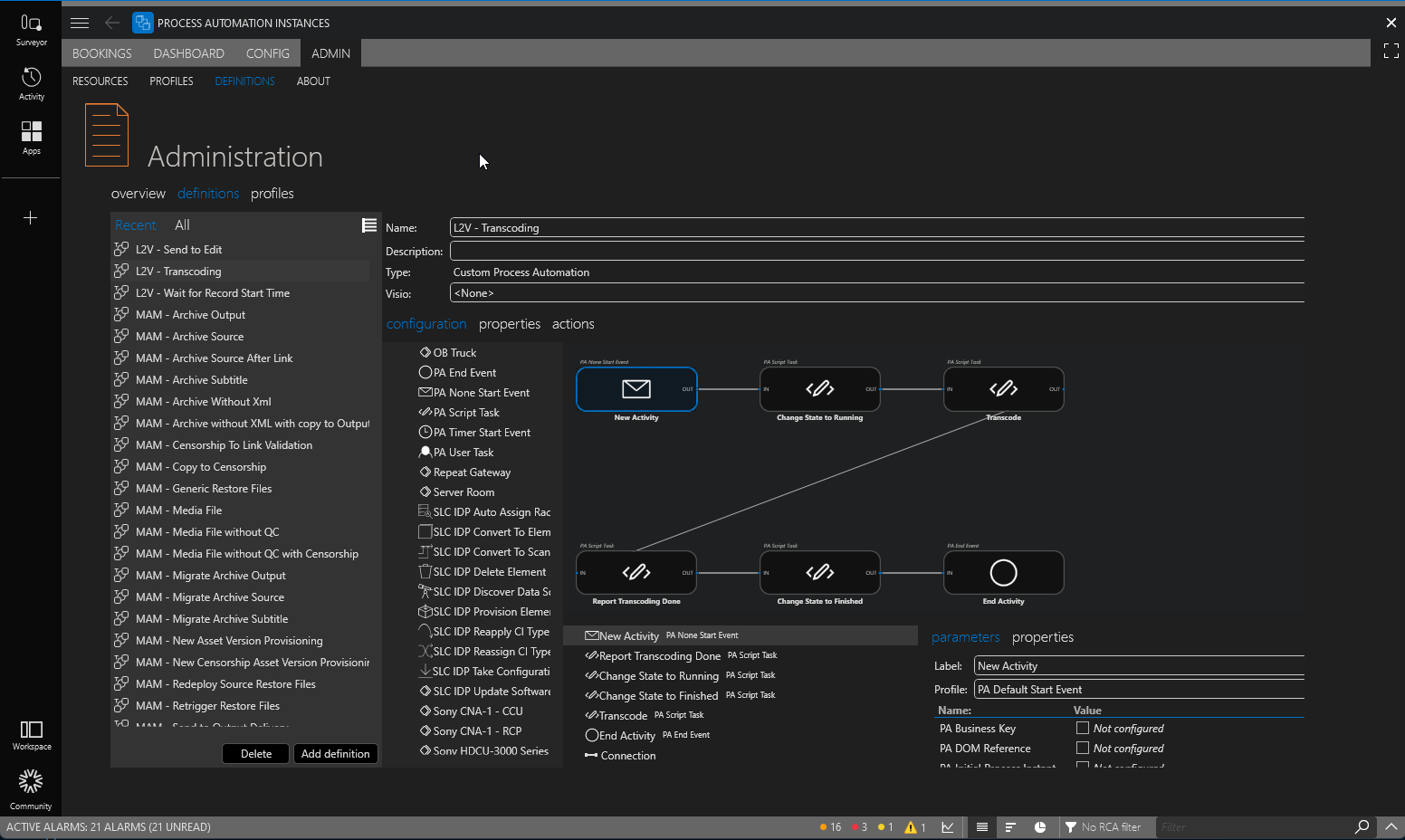 Here is a quick view on how things work under the hood: every task is managed by DataMiner Process Automation (PA) with a plethora of activities that can be stitched together in a BPMN manner. Overall, more than 30 different processes are managed by DataMiner as of today.
Here is a quick view on how things work under the hood: every task is managed by DataMiner Process Automation (PA) with a plethora of activities that can be stitched together in a BPMN manner. Overall, more than 30 different processes are managed by DataMiner as of today.
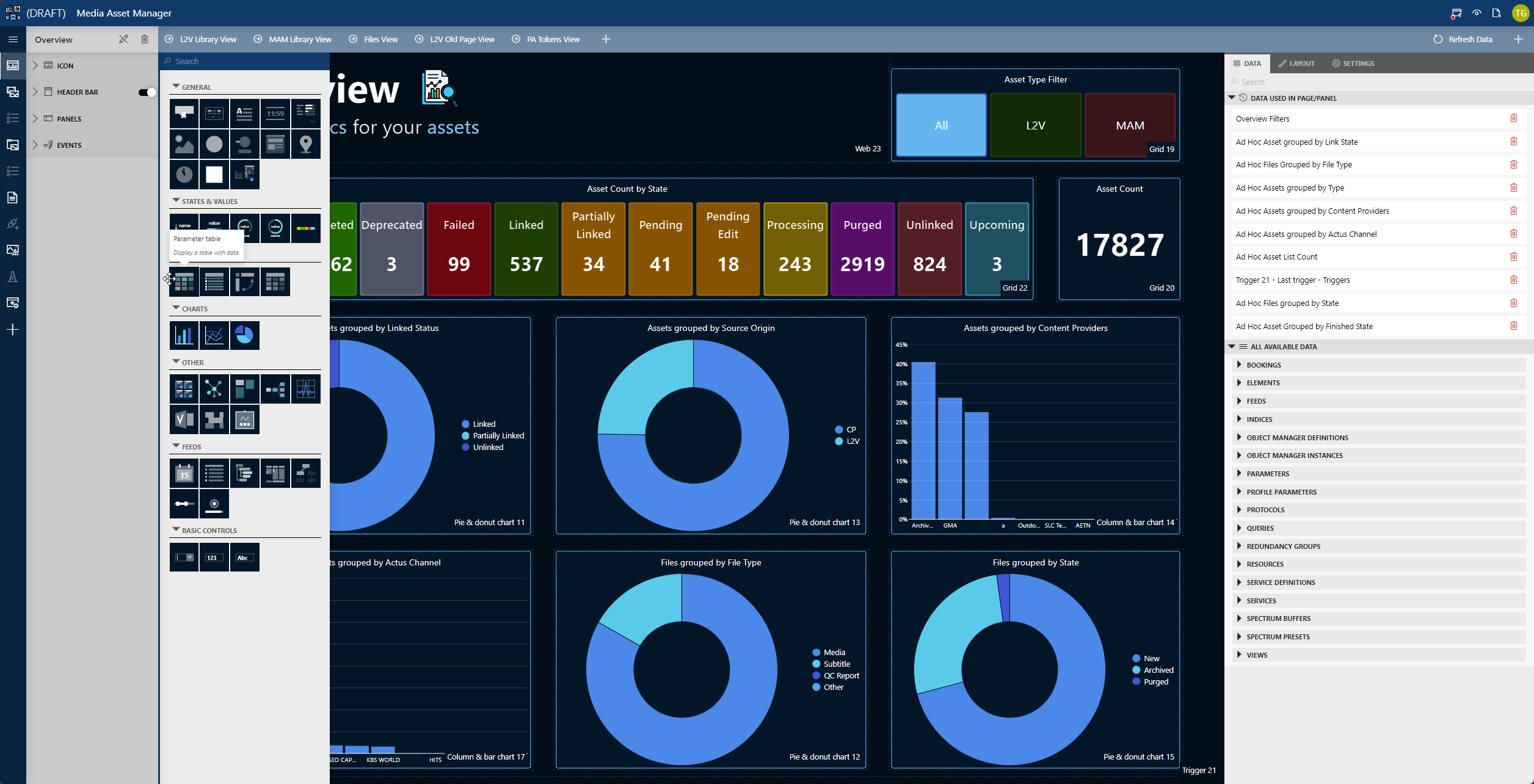 Want to change the user interface? Just go to edit mode, start adding new building blocks, and link them with data from DataMiner's digital twin.
And with the flexibility that comes with DataMiner Process Automation, DataMiner Object Models, and DataMiner Low-Code Apps, the solution can constantly evolve. New workflows can be added, the underlying infrastructure can be replaced whenever needed, and a fast reaction to new needs is possible at any time.
Want to change the user interface? Just go to edit mode, start adding new building blocks, and link them with data from DataMiner's digital twin.
And with the flexibility that comes with DataMiner Process Automation, DataMiner Object Models, and DataMiner Low-Code Apps, the solution can constantly evolve. New workflows can be added, the underlying infrastructure can be replaced whenever needed, and a fast reaction to new needs is possible at any time.
1 thought on “MediaOps – Media Asset Workflow Automation”
Leave a Reply
You must be logged in to post a comment.
Great example of MediaOps file-based operation!!!